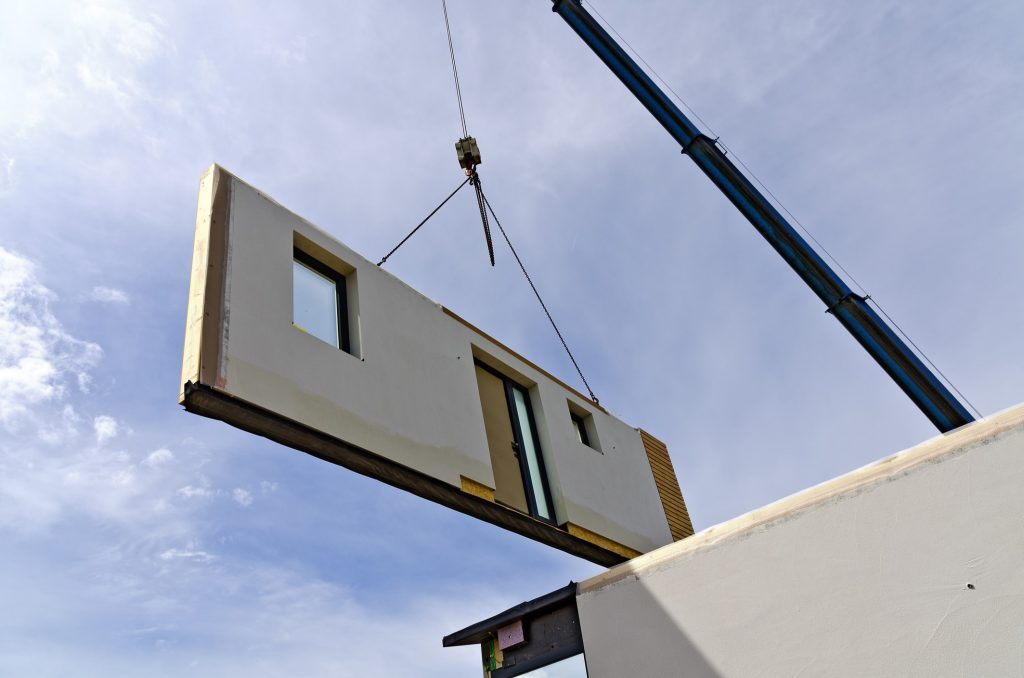The summer saw two key inquiries by Sir Oliver Letwin and the House of Lords put the spotlight on offsite construction as a way of closing the gap between housing production and the government’s target of 300,000 new properties a year. Tom Shaw, director at Ramboll, discusses their findings – and how the industry must respond
 It has been two years since the Farmer Review, Modernise or Die, which warned the industry of the need to embrace Modern Methods of Construction (MMC) in order to survive and help solve the housing crisis. Coupled with this, government targets have increased to 300,000 new homes a year to meet current housing demands. Despite all of this, we are not seeing the uptake in offsite construction that had been hoped for, and the government is asking how we close the gap.
It has been two years since the Farmer Review, Modernise or Die, which warned the industry of the need to embrace Modern Methods of Construction (MMC) in order to survive and help solve the housing crisis. Coupled with this, government targets have increased to 300,000 new homes a year to meet current housing demands. Despite all of this, we are not seeing the uptake in offsite construction that had been hoped for, and the government is asking how we close the gap.
Following earlier government reports and the Housing White Paper in 2017, over the summer of 2018 we have seen two further influential inquiries: the Independent Review of Build Out by the Rt Hon Sir Oliver Letwin MP, plus the House of Lords Science & Technology Select Committee report, Offsite Manufacture for Construction: Building for Change.
In June, Sir Oliver Letwin’s draft analysis was published, with the final report due October 2018 ahead of the Autumn Budget. In this, he highlighted that on large-scale developments, the median build-out period, from planning consent to last completed home, was a whopping 15.5 years!
A primary focus and conclusion of the review so far was absorption rates – the rate at which a newly constructed house can be sold into the local market without materially disturbing the market rate. Other factors where offsite construction can provide a solution were also considered, including materials shortage, availability of skilled labour, constrained logistics on site and difficulties of land remediation.
Limited availability of skilled labour was identified, in particular overseas workers. Figures from the Home Builders Federation show that 50% of the skilled labour workforce in London and over 20% in the South East are from outside the UK. Sir Oliver argues that a motivation for moving to modular “factory” production of major components avoids the need for workers with particular skillsets to be present on site at precisely the right moment.
The number of skilled bricklayers was recognised as a critical issue for the industry. The evidence showed a 30% increase in bricklayer earnings since Q1 2014. Three-quarters of bricklayers are engaged in the construction of new homes, making this part of the sector particularly sensitive to large increases in housebuilding volumes.
Sir Oliver concluded that MMC does not sufficiently reduce demand for highly skilled bricklaying and that a five-year “flash” programme of pure on-the-job training was still needed.
However, when combining this lack of skillset with the potential medium-term shortage of materials, eg bricks, if housing delivery is accelerated then surely MMC is the answer. Alternative finishes such as precast panels and other offsite techniques could help, or even alternatives that provide the visual appearance of brickwork.
 The House of Lords Science & Technology Select Committee inquiry amassed a wide range of evidence, including papers submitted from across the industry, interviews and various site visits.
The House of Lords Science & Technology Select Committee inquiry amassed a wide range of evidence, including papers submitted from across the industry, interviews and various site visits.
The case for offsite manufacture was clear, with reference to various tangible benefits; namely better quality, faster delivery, fewer labourers/increased delivery, more regional jobs, improved health and safety, improved sustainability and reduced disruption to the local community during construction.
However, uptake is clearly limited due to the regulatory, financial and commercial environment of the sector. Several recommendations for the industry to overcome the barriers were suggested, including government intervention.
Interestingly, one of the key recommendations was that the government, through Homes England, should put pressure on local authorities and housing associations to stipulate the use of offsite technologies. It even went as far as to suggest mandating a proportion of offsite development on large-scale projects. This could have huge implications for the industry and encourage adoption of offsite on a much wider scale.
Further recommendations suggest equipping workers entering the profession with the digital skillset required for MMC. Digitalisation of the sector goes hand-in-hand with a move towards offsite and this will be critical to its success. There needs to be a huge culture change within the industry – we need to be designing for offsite from the outset, not trying to shoehorn it in at later stages, otherwise the case for offsite will never stack up.
The Construction Sector Deal has been highlighted as a key step forward for the industry, but a detailed implementation plan and timetable is needed. A “presumption in favour” of offsite construction is a strong commitment from the government and is welcomed. As part of this, a consistent pipeline of projects was recommended to allow the comfort for companies to invest in offsite manufacturing facilities. Certainty in an age of uncertainty would be widely welcomed by the sector, but how this may work in practice is not clear.
There is a lot of nervousness attached to the cyclical nature of this industry – an argument made by those resistant to investing too heavily in offsite. In times of a depressed economy, how do we continue to push through the demands required of factory manufacturing new homes? This point is key to whether developers/housebuilders choose to vertically integrate modular factories into their set-up or whether they continue to source products from a supply chain. It will be interesting to see how this pans out in time as we see who will be brave enough to buy or set-up factories of their own.
It is fantastic to see this level support for offsite at a government level. Even at the annual RESI convention in September, our latest housing minister, Kit Malthouse, made his first address to the sector focusing on “more, better, faster”.
During the interview, there was an audience poll asking the 700 industry professionals in the audience “Will the government meet its target of 300,000 new homes a year by 2025?” of which there was a resounding result of 92% No! A rather despondent Malthouse appealed to the sector to embrace change and innovation. Again, another strong endorsement that offsite is critical to meeting the government housing targets.
Let us hope that the government acts on the recommendations set out by the House of Lords select committee. As the government starts to embrace offsite construction across the board, the industry needs to engage. In the words of our latest housing minister, “do not become the next Kodak”.
 Tom Shaw
Tom Shaw
Director
Ramboll
Tel: +44 7843 329 490
Twitter: @ramboll













